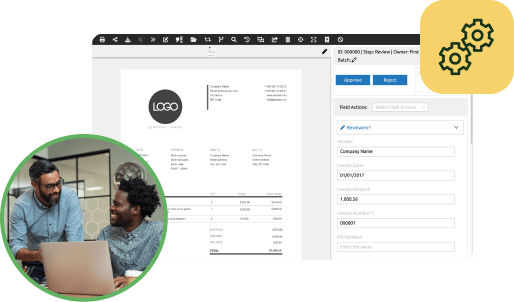
PairSoft
The strongest AP automation, document management, procurement, and fundraising automation platform for mid-market and enterprise companies with integrations to your ERP system.
View all posts by PairSoftPairSoft

Native integration refers to the integration of applications built on the same platform (sometimes integration platform-as-a-service, or iPaas), while non-native integration involves integrating applications built on different platforms. While both approaches can be effective, opting for native ERP integration provides numerous automation benefits over non-native integration, which can create informational silos. We’ll explore the many advantages of natively integrated ERP software, including greater efficiency and reliability, improved data accuracy and consistency, better security, and ease of maintenance and support. You’ll have a comprehensive understanding of why choosing a natively integrated ERP solution is a smart decision for any organization looking to centralize their business needs and maximize profitability.
Native integration refers to the integration of ERP software with other applications (or SaaS) that are built on the same platform as the ERP software. For example, if an organization uses the Microsoft Dynamics ERP, native integration methods would involve integrating it with other Microsoft applications such as SharePoint, Power BI, or Teams. By contrast, non-native integration involves integrating ERP software with applications built on different platforms. For example, an organization might use Salesforce as its customer relationship management system and need to integrate it with its SAP ERP software.
In conclusion, choosing a native ERP integration solution over a non-native one is a smart decision for any organization looking to streamline their business operations and project management. Native integration offers greater efficiency and reliability, easier maintenance and support, better data accuracy and consistency, improved security, and is more cost-effective. By integrating applications built on the same platform, data flows seamlessly between applications, eliminating errors and inconsistencies caused by differences in data structures. Furthermore, native integration enables consistent application of security measures across all applications, reducing the risk of security breaches.
Moreover, native ERP integration can offer significant long-term benefits for an organization. As the business grows and its needs evolve, native integration allows for easy scalability and expansion, enabling the organization to add new applications and functionalities to its ERP system without the need for significant changes or investments. With the right native integration solution, organizations can have greater control over their data, streamline their business processes, and increase efficiency, ultimately leading to improved profitability and competitiveness. In today’s fast-paced and ever-changing business environment, choosing a native ERP integration solution is a strategic investment in the future success of any organization.
Looking for natively integrated AP, Procurement, Fundraising, and Document Management solutions with your ERP? Get a free demo from PairSoft today.
Get a free demo to learn how our tailored workflows have boosted the AP performance for organizations of all sizes.


Many organizations start with manual receipt handling, fragmented card feeds and slow AP processes. Implement AI agents to auto-capture receipts, route approvals, enable punch-out buys and post to the ERP.
Result: faster batching, fewer errors and cost savings. “This saves us hours every month.”
Many organizations face slow, paper-heavy AP and fragmented procurement that waste time and inflate costs. AI Agents can automate approvals, PO matching and record sync to improve speed, accuracy and control. Client quote: “It freed up hours and made our process reliable.”
Operational drag and rising costs slow growth: teams waste time on manual tasks, misaligned priorities and opaque processes. AI Agents help automate routine work and coordinate actions across teams. “We’ve lost time to repeats and handoffs,” says a typical client.
Companies struggle with manual procurement, fragmented approvals, and costly integrations that slow growth and obscure spend. Our AI Agents streamline requisitions, POs, and invoice matching to cut manual work and improve visibility. “We were wasting time and missing insights,” says a client.

Many teams start with fragmented PO/AP systems, manual matching and delayed financial reporting. Deploying AI agents to automate PO checks, real-time encumbrance tracking and invoice matching reduces processing time and errors, delivering live budgets and faster closes. “Finally, we can see current balances and approve instantly.”
Many companies juggle growing invoice volumes and legacy systems. They struggle with manual processes, compliance gaps and limited headcount. Our AI Agents automate integrations, enforce rules and surface exceptions. The typical outcome: faster closes and measurable ROI. “We stopped chasing invoices.”